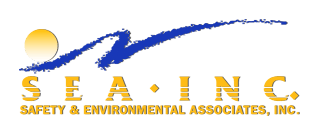Introducing Flex Learning
SEA Introduces Flex-Learning
To say that 2020 was a challenging year may be the understatement of the decade. The way we socialized, work, and especially training/learning was set on new pathways.
THE CHALLENGE
For any company, coordinating a successful training event is always a vast undertaking. For a participant to truly learn, they must first be willing to engage in the subject. And for them to engage in the subject, they must be active in the learning process. Studies have shown that what adults recall in the learning process depends on how active a person is in the training. “People remember 90 percent of what they say and do as opposed to 30 percent of what they see and hear. Although kinesthetic learners retain best, they make up only 5 percent of the population whereas visual learners make up 65 percent and auditory learners, 30 percent.” (Mind Tools 1998)
Now couple that knowledge with the fact that the Pandemic has limited our ability to interact in training, so the next viable solution is online training. This sounds good on the surface but in fact, online learning through generic web-based classes is showing to have a nearly 300% increase in failure and retention is down nearly 70%. (Department of Education 2020). Just ask any parent of a virtual learner during the pandemic.
One of the reasons that adults struggle with this learning format is because the presentation is GENERIC and is less meaningful to them.
THE SOLUTION
By introducing SEA’s “Flex-Learning”; SEA’s has taken ordinary web-based training to new levels of comprehension. “The goal was to use the convenience of web-based training but customize the presentation and break it up into smaller chunks or micro-learning segments, then evaluate the learners' ability to comprehend the concepts.” So, the SEA team explored numerous training techniques and presentation concepts and developed what we call Flex-Learning. A web-based convenient online presentation that is customized for your companies based on your safety, environmental, or specific needs.
So you are thinking “That sounds expensive” but in fact, we were surprised how little effort it took to take a “Generic” training program and make it site-specific for an individual company.
Try it out!
Check out a quick demonstration video.
If you would like more information and an opportunity to experience this training Contact Us or give us a call at 888-374-3442. We are here to help!



